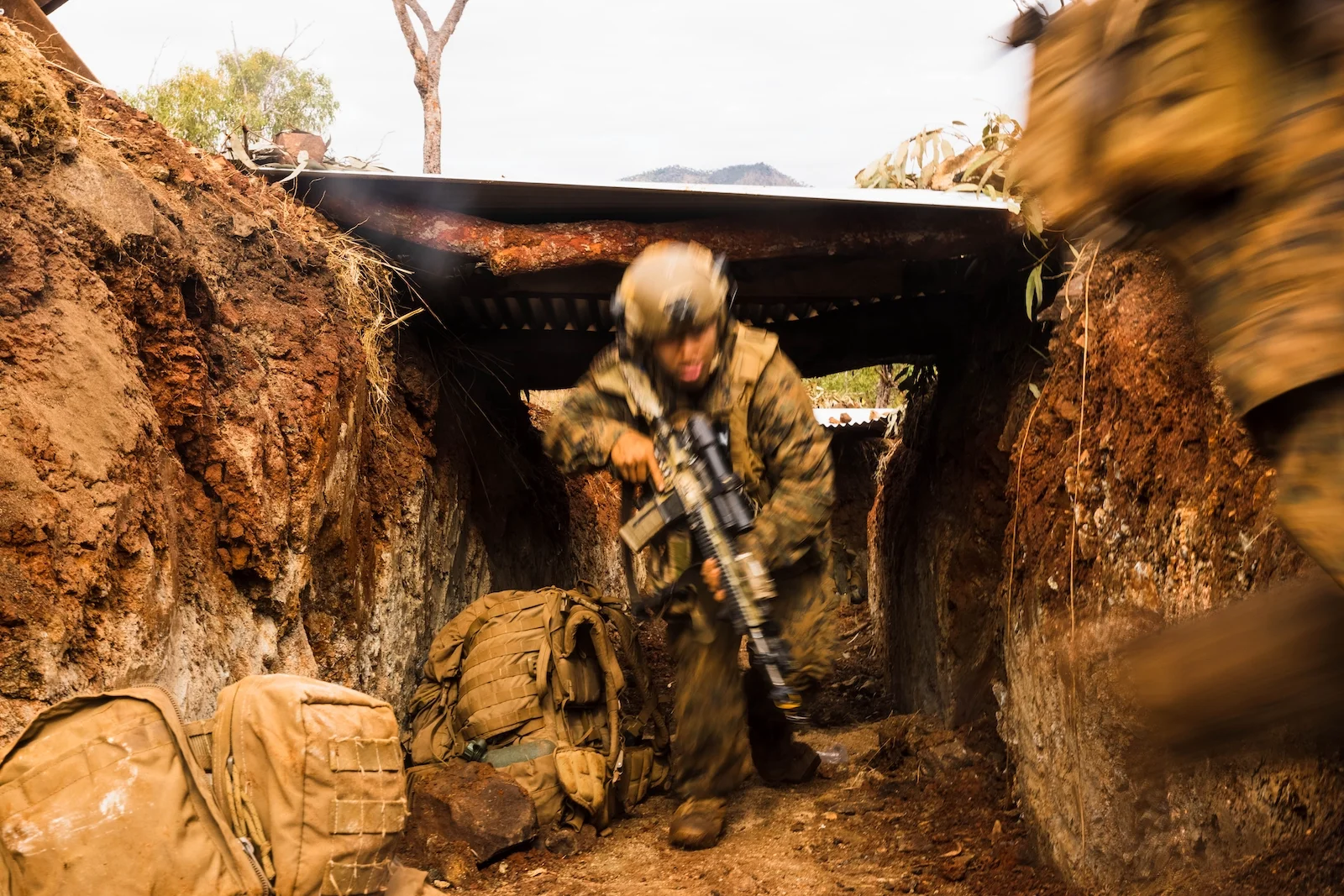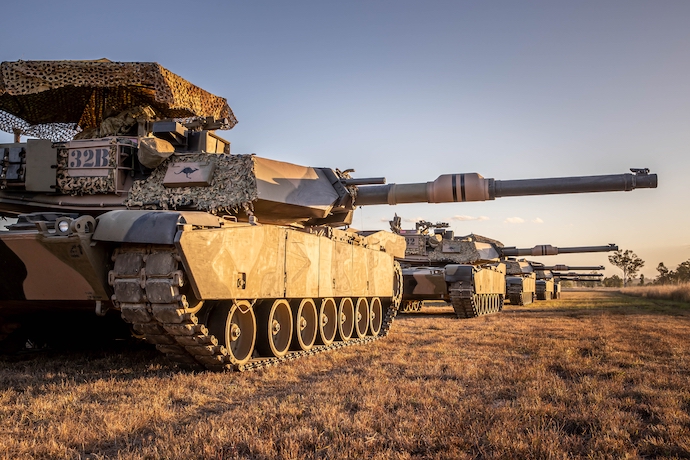
Australia’s Role in a Dual Contingency
The most alarming Indo-Pacific scenario is no longer a single flashpoint war; instead, it is a complex web of interconnected conflicts. Strategists increasingly speak of a dual contingency: a Chinese assault on Taiwan coinciding with a full-scale North Korean offensive against the South. Such a pairing would force Washington to split attention and hard power across two fronts at once—an operational and political strain by any measure.
In that frame, Tokyo’s priority would be the Taiwan Strait. Japan would surge most of its naval and air power to support U.S. operations against China. Seoul’s priority would be survival. South Korea would commit the bulk of its forces to defending the capital and countering a northern invasion. Both allies would press Washington for decisive backing. Realistically, defending two theaters at high intensity would be a Herculean task—even for the United States.
For Australia, this is not an abstract war game. If conflict engulfs Taiwan and the Korean Peninsula, regional stability will collapse. Trade routes seize, deterrence architecture buckles, and Australia’s economic and security interests take direct hits. The core question, then, is how Canberra can help stabilize the region without exhausting finite military resources.
What Canberra Can Do
Australia’s navy is smaller than that of the United States and Japan, but targeted missions can still matter. Frigates and submarines patrolling secondary sea lanes—the Philippine Sea and the eastern approaches—could free American and Japanese vessels for frontline duty. Often dismissed as mundane, minesweeping could become indispensable once chokepoints in the South and East China Seas clog with hazards. By emphasizing enabling roles rather than head-on combat, Australia can expand allied warfighting capacity while managing risk.
Logistics would decide outcomes in a dual contingency. Australia can serve as a rear-area hub for the United States and partners. Under AUKUS and the Quad, Canberra can relieve pressure on U.S. bases in Japan and Guam by pre-positioning fuel and munitions in northern Australia, opening bases such as Darwin and Tindal for aircraft rotation and repair, and hardening maintenance and supply chains against disruption.

The cyber and space domains offer additional leverage. Australia can deploy cyber defense teams to protect allied networks, particularly those that underpin logistics and command and control. Deepening space-situational-awareness cooperation—drawing on Pine Gap-related facilities—would strengthen early warning and targeting fidelity across both theaters.
Economic and diplomatic stabilization also belongs on the task list. A simultaneous war in Taiwan and Korea would paralyze regional trade and risk a global downturn. Australia cannot prevent the initial shock, but it can mitigate it: by coordinating emergency LNG deliveries and critical minerals supply with allies, and leveraging diplomacy through ASEAN and the Pacific Islands Forum to contain spillover risks. Using the collective voice of middle powers, Canberra can help press Beijing and Pyongyang toward talks while reinforcing deterrence.
Policy Priorities
First, plan for the worst in collaboration with allies. Canberra should develop dual-contingency plans jointly with the United States and Japan—within AUKUS and Quad formats—identifying in advance which Australian assets would flow toward the Taiwan Strait and which toward the Korean Peninsula should fighting erupt.
Second, build the logistics bridge now. Australia should underwrite rapid U.S. and allied rotational deployments by reserving fuel and munitions in hubs such as Darwin and Tindal. These stores should be tied to precision-guided munitions supply plans, potentially via joint investment with Washington and Tokyo to expand production and stockpiles.
Third, support South Korea without overextending its resources. Rather than deploying ground formations, Australia can deliver high-impact, lower-footprint contributions: intelligence sharing, cyber defense detachments, and tailored logistics support. Trilateral coordination with Tokyo and Seoul would reduce duplication and magnify the effect.
Fourth, expand maritime specialist capabilities. Investments in minesweepers, patrol assets, and anti-submarine warfare would ease the strain on U.S. and Japanese fleets. Stationed along strategically important—but comparatively less hazardous—sea lanes, these platforms can secure maritime trade and backstop main-effort forces.
Finally, prepare the public—and the economy—for shocks. Energy supply disruptions would be likely. Canberra should brief citizens candidly, strengthen continuity planning, and build emergency diversification measures with India and other Indo-Pacific partners to cushion supply chains and domestic industry.
To make this posture credible, Australia will also need to stress-test the home front. Fuel reserves and port capacity in the north remain finite; surging traffic through Darwin during a crisis would strain infrastructure and local communities. Exercises that pair civil-military logisticians with industry—energy, rail, and shipping—would surface chokepoints before a crisis does. The same goes for munitions: announcements are not stockpiles. Contracting, surge production lines, and assured inputs for explosives and propellants are the unglamorous details that determine whether strategy works in practice.
There are political dimensions, too. A dual contingency would invite coercive pressure on Australia—from cyberattacks on hospitals and banks to economic retaliation aimed at exporters. Clear public messaging about risk tolerance and alliance obligations will matter, as will tight coordination with New Zealand and key Southeast Asian partners that sit along vital sea lanes. If Australia expects access and overflight in extremis, it should be investing diplomatic capital now to secure it.
Finally, Canberra should audit decision-making speed. In a two-front crisis measured in hours and days, authorities for host-nation support, intelligence sharing, and the movement of foreign forces cannot await ad hoc cabinet processes. Pre-delegated authorities with strong oversight would allow Australia to move fast without sacrificing accountability.
A Realistic Role
A Taiwan–Korea dual contingency would be the most severe test of allied resolve in the Indo-Pacific since World War II. The heaviest burdens would fall on the United States, Japan, and South Korea. But Australia cannot stand apart. With prudent preparation now—focused on logistics, enabling roles at sea, resilience in cyber and space, and coalition diplomacy—Canberra can make a meaningful contribution to regional peace and stability without burning through its own limited resources.
